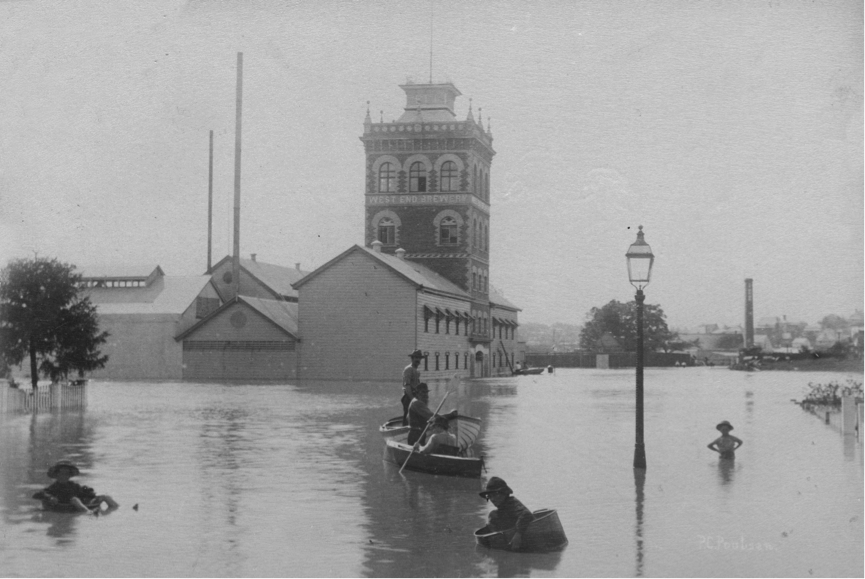|
Recovering historical weather observations for long-term climate analysis is a well-established practice in many places in Europe, where written documents cover several centuries. In Australia, written records only begin with British settlement in the late 18th century, as the indigenous Aboriginal people maintain their history through largely oral traditions. However, this does not mean that there is no historical climate information for the Great Southern Land. Recent efforts are uncovering a treasure trove of historical weather and climate data that are shedding light on both the regional and global climate. Here are just a few examples: Southeastern Australia’s climate history
The South Eastern Australian Recent Climate History project (SEARCH), based at The University of Melbourne, involved historians, climatologists, hydrologists and palaeoclimatologists in an effort to uncover the climate of Australia’s highly populated southeastern region for the past 200–500 years. Documentary records of floods, droughts, crop shortages and extreme weather were unearthed by historians, enabling the analysis of rainfall variability in the Sydney area back to British settlement in 1788. Instrumental observations from 38 different sources including newspapers, farmers’ diaries and government documents were also recovered and digitised. The sources contain daily and monthly temperature, rainfall and pressure observations for Australia’s earliest British colonies from 1788 to 1860. Together, the historical numbers and words paint a picture of the climate experienced during the first 72 years of British settlement in Australia, including droughts in the early 1790s and 1820s, and cold conditions in the 1830s. The legacy of Sir Charles Todd In what must be one of Australia’s longest running, continuous citizen science projects, the volunteer Australian Meteorological Association in South Australia has dedicated more than a decade to the recovery and digitisation of Australian meteorological observations. The team is made up of volunteers in Adelaide, Hobart and Perth, who have has so far uncovered observations as far back as the 1830s. The rescued data include daily weather maps spanning 1879–1955 from pioneering meteorologist and polymath Sir Charles Todd, and a dense network of 19th century data rescued from lighthouse records on Australia's southern coast. These records provide much needed information on historical climate variability in the poorly observed Southern Ocean region. A new discovery Another dataset has recently come to light, this time in regional New South Wales, an area highly sensitive to El Niño–Southern Oscillation variability. Algernon Belfield, a grazier and amateur meteorologist, kept a meticulous weather diary on his property for over 40 years, from 1877 to the early 1920s. Belfield’s diaries were donated to a local library by his descendants, and are now being digitised by a dedicated team based at the University of Newcastle, with support from volunteer citizen scientists. From Australia to the world Many of these rescued observations have been fed into international databases, improving the quality of global historical climate products such as the International Surface Pressure Databank and the 20th Century Reanalysis. A number of the recovered observations, including the 1788-1860 dataset and Todd’s weather folios, are even available online, giving anyone the opportunity to explore Australia’s climate of the past.
21 Comments
Phill
7/27/2016 09:26:53 am
Hi, Is anyone that you know of taking the next step and translating these diary entries into a spreadsheet?
Reply
Linden
3/14/2017 12:44:57 am
Hi Phill,
Reply
12/22/2022 06:26:53 am
HELLO, ITS NICE ARTICLE , WE ALL BE AWARE OF MEDIA IS A FANTASTIC SOURCE OF FACTS.
Reply
12/22/2022 06:27:21 am
HI THERE TO EVERY ONE, THE CONTENTS EXISTING AT THIS WEB SITE ARE TRULY AMAZING FOR PEOPLE KNOWLEDGE, WELL, KEEP UP THE GOOD WORK.
Reply
12/22/2022 06:27:41 am
EXCELLENT BLOG YOU’VE GOT HERE.. IT’S DIFFICULT TO FIND PREMIUM QUALITY WRITING LIKE YOURS, I SERIOUSLY APPRECIATE PEOPLE JUST LIKE YOU!
Reply
jaeseu
1/13/2023 08:29:46 pm
Thanks for such a pleasant post. This post is loaded with lots of useful information.
Reply
1/24/2023 08:11:45 pm
Well, I think your blog ate my first comment (it was too long), so let me summarize what I submitted, I'm fully enjoying your blog. I'm also an aspiring blog writer, but it's still my first time. Do you have any recommendations for people who write blogs for the first time? I heartily thank you. 머니상
Reply
3/25/2023 09:34:15 pm
"I am unable to read articles online very often, but I’m glad I did today. This is very well written and your points are well-expressed. Please, don’t ever stop writing.
Reply
3/25/2023 09:35:01 pm
"This is very educational content and written well for a change. It's nice to see that some people still understand how to write a quality post.!
Reply
3/25/2023 09:35:42 pm
"Thanks for writing such a good article, I stumbled onto your blog and read a few post. I like your style of writing...
Reply
3/25/2023 09:36:10 pm
I got too much interesting stuff on your blog. I guess I am not the only one having all the enjoyment here! Keep up the good work.
Reply
10/28/2023 04:04:48 pm
I really appreciate the time and effort you put into your blog posts. It's clear that you're passionate about it. <a href="https://www.topsandbottomsusa.com/collections/nike-tech">Nike Tech Fleece outfit</a>
Reply
Leave a Reply. |
Archives
August 2021
Categories |


 RSS Feed
RSS Feed